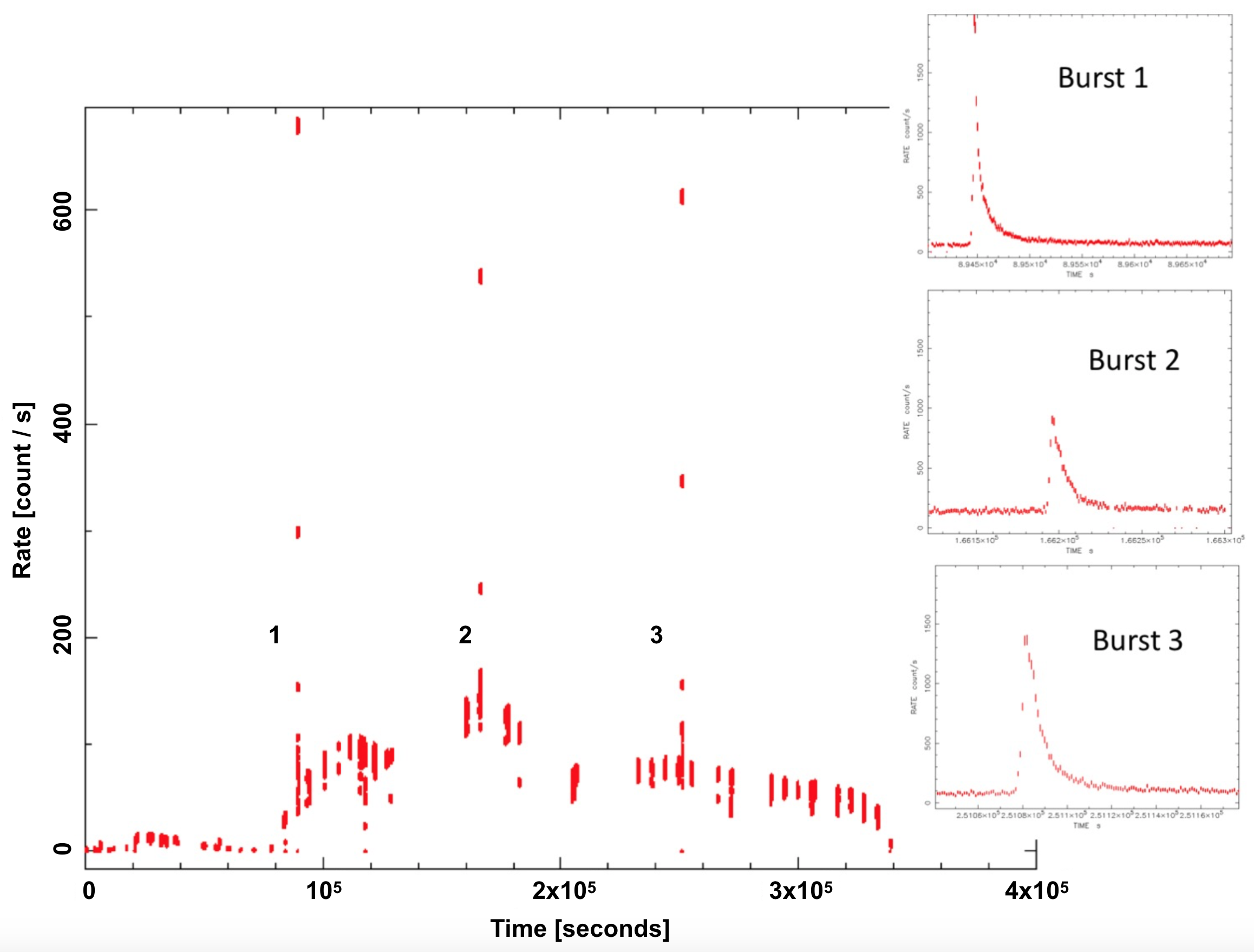NICER / ISS Science Nugget
for October 31, 2019
NICER detects multiple bursts from neutron star MAXI J1807+132
This week, NICER was continuing to track the transient source MAXI
J1807+132 as it was reflaring since its most recent outburst in
September.
Discovered by the ISS/JAXA payload MAXI in March 2017, MAXI J1807+132
has been a mystery. X-ray and optical data have suggested that it is an
X-ray binary comprising a low-mass star and a compact object. The
compact object could be either a black hole or a neutron star. This
week, NICER detected 3 thermonuclear bursts from MAXI J1807+132,
establishing that the compact object in this binary is a neutron star
(see figure).
These bursts occur as matter from the low-mass star in the binary
accretes onto the surface of the neutron star until a critical density
is achieved and thermonuclear ignition can take place. The
characteristic fast rise and slow decay in X-ray brightness reflects the
initial expansion and subsequent re-settling and cooling of the star's
outermost layer. The mere detection of these bursts proves that the
compact object has a surface on which this accretion builds up. Neutron
stars have surfaces while black holes do not.

Figure:
The light curve of MAXI J1807+132 obtained by NICER during this object's
most recent re-flare. Three thermonuclear bursts are detected and shown
in detail in the insets. The duration of each burst is about 10 seconds.
The burst intensity places an upper limit on the distance of MAXI
J1807+132 to be 13 kiloparsecs (approximately 43,000 light-years).
NICER's initial data on the 1st two bursts was reported in
Astronomer's Telegram #13239 by Arzoumanian et al.
<< Previous
Main Index
Next >>